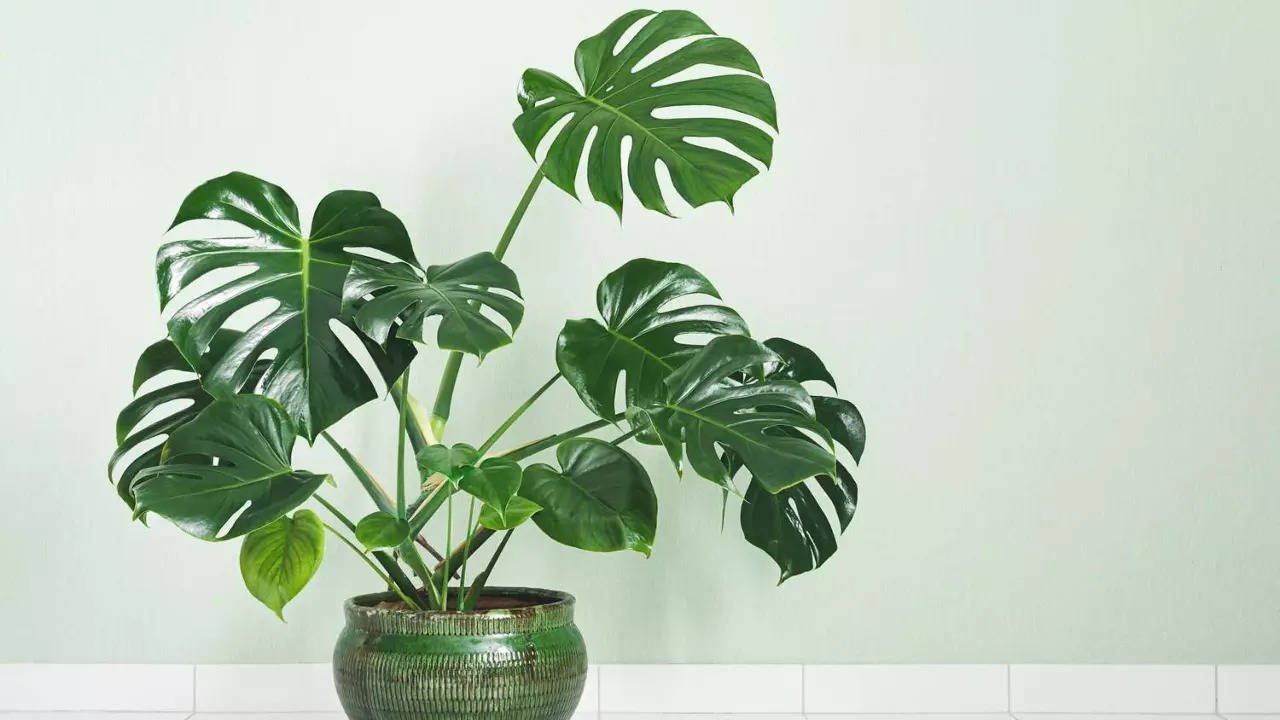The Monstera plant, often called the Swiss Cheese Plant due to its unique, perforated leaves, is a popular houseplant known for its tropical beauty and relatively low maintenance. However, to keep your Monstera thriving, you need to provide the right balance of light, water, humidity, and nutrients. Here’s a comprehensive guide to Monstera plant care.
Light Requirements

Monstera plants thrive in bright, indirect light. Too much direct sunlight can scorch their leaves, while too little light may slow their growth. Placing your Monstera near a window with sheer curtains or in a spot that receives filtered light is ideal.
Watering Needs
Water your Monstera plant when the top 1-2 inches of soil feel dry. Overwatering can lead to root rot, while underwatering can cause the leaves to droop. A consistent watering schedule, adjusted based on seasonal needs, will help keep your plant healthy.
Humidity and Temperature
Monstera plants love humidity, mimicking their natural tropical environment. Keep humidity levels between 60-70%, especially during dry seasons. You can increase humidity by misting the leaves, placing a humidifier nearby, or grouping your Monstera with other plants.
Temperature-wise, Monsteras prefer warm conditions between 65-85°F (18-29°C). Avoid placing your plant near cold drafts or heat sources.
Soil and Potting Mix
A well-draining soil mix is essential for Monstera plants. A combination of potting soil, perlite, and orchid bark provides the right balance of aeration and moisture retention. Ensure your pot has drainage holes to prevent excess water buildup.
Fertilizing Your Monstera

Feed your Monstera with a balanced liquid fertilizer every 4-6 weeks during the growing season (spring and summer). Reduce feeding in fall and winter when growth slows down.
Pruning and Maintenance
Regular pruning helps keep your Monstera looking its best. Remove yellowing or damaged leaves and trim overgrown stems to encourage healthy growth. Cleaning the leaves with a damp cloth also helps remove dust and improves photosynthesis.
Support and Propagation
As Monsteras grow, they may require support like a moss pole or trellis to mimic their natural climbing habit. If you want to propagate your Monstera, take a cutting with at least one node and place it in water or soil until roots develop.
Common Problems and Solutions
- Yellow Leaves: Often caused by overwatering; allow the soil to dry out slightly between waterings.
- Brown Leaf Edges: May indicate low humidity; increase moisture around the plant.
- Leggy Growth: Insufficient light; move to a brighter location.
- Pests: Watch for spider mites, mealybugs, and scale insects. Use insecticidal soap or neem oil for treatment.
Also Read : What Are The Most Common Monstera Diseases And Solutions?
Conclusion
Caring for a Monstera plant is relatively easy with the right approach. Providing proper lighting, watering, humidity, and nutrition will ensure your plant remains healthy and vibrant. With minimal maintenance, your Monstera can grow into a stunning indoor focal point, adding a tropical touch to your home.
FAQs
1. How often should I water my Monstera?
Water when the top 1-2 inches of soil feel dry, usually every 1-2 weeks.
2. Can Monstera plants tolerate low light?
Monsteras can survive in low light but will grow best in bright, indirect light.
3. How can I increase humidity for my Monstera?
Use a humidifier, mist the leaves, or place the plant near other humidity-loving plants.
4. When should I repot my Monstera?
Repot every 1-2 years or when roots outgrow the pot.
5. Is Monstera toxic to pets?
Yes, Monstera plants are toxic to cats and dogs if ingested, so keep them out of reach.

